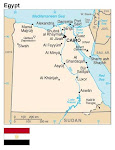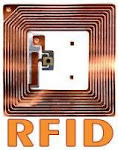 Looking for a cheap fare 'round the world? Your search is over. A NASA team has built a small, low-cost satellite called FASTSAT, and it's almost ready to fly.
Looking for a cheap fare 'round the world? Your search is over. A NASA team has built a small, low-cost satellite called FASTSAT, and it's almost ready to fly.Need some details before you sign up? Read on.
Why is it called FASTSAT?
It's not because it travels fast. It's because it was built in a hurry. The FASTSAT team built this prototype in a mere 10½ months for the relatively thrifty sum of 4 million dollars.
"That's unheard of," says Marshall Space Flight Center's Edward "Sandy" Montgomery, "to build something that will fly in space in that short time frame and for that amount of money. But that was part of our experiment – to see if it could be done." The full name says it all: Fast, Affordable, Science and Technology SATellite.Montgomery, the FASTSAT Project Manager, led a team already experienced in low-cost, quick turnaround balloon missions. "In the balloon program, people know how to take risks and do things more quickly," he says. "Quicker build time means less labor charges, and that's one of the keys to keeping costs down."Balloon missions taught the team some specific ways to save time and money. For instance, they used commercial off-the-shelf components, which are readily available and cheaper than specially ordered parts."We also did some scrounging and got some items left over from other programs," says Montgomery. "There's nothing fancy on this satellite."They even built the satellite out of aluminum instead of expensive titanium. And they used a design so simple "even a cave man could do it." The design required few cuts in the metal, so fabrication was fast.FASTSAT is safe as well as simple. Magnets provide its attitude control instead of jets, so there are no propellants onboard to offgas or explode. The satellite has no moving parts – no blades or momentum wheels whirring around. All of these factors add up to subtract cost. "We are kind of like the bargain basement of satellite building," jokes Montgomery.
Why did they do it?
A new class of very low cost launch vehicles (such as SpaceX's Falcon 1 and Kistler's K-1) has opened doors for inexpensive satellites and instruments."You wouldn't put an expensive payload on an inexpensive rocket – it's a risk issue. You'd use an inexpensive bus to fly an inexpensive instrument on an inexpensive rocket," says Montgomery.For example, FASTSAT could be used for test demonstrations of new technologies. "It doesn't make sense to spend several hundred million dollars just to test a technology before a major mission when a FASTSAT can do it for so much less," states Montgomery. "That's the impetus driving this project."
It's not because it travels fast. It's because it was built in a hurry. The FASTSAT team built this prototype in a mere 10½ months for the relatively thrifty sum of 4 million dollars.
"That's unheard of," says Marshall Space Flight Center's Edward "Sandy" Montgomery, "to build something that will fly in space in that short time frame and for that amount of money. But that was part of our experiment – to see if it could be done." The full name says it all: Fast, Affordable, Science and Technology SATellite.Montgomery, the FASTSAT Project Manager, led a team already experienced in low-cost, quick turnaround balloon missions. "In the balloon program, people know how to take risks and do things more quickly," he says. "Quicker build time means less labor charges, and that's one of the keys to keeping costs down."Balloon missions taught the team some specific ways to save time and money. For instance, they used commercial off-the-shelf components, which are readily available and cheaper than specially ordered parts."We also did some scrounging and got some items left over from other programs," says Montgomery. "There's nothing fancy on this satellite."They even built the satellite out of aluminum instead of expensive titanium. And they used a design so simple "even a cave man could do it." The design required few cuts in the metal, so fabrication was fast.FASTSAT is safe as well as simple. Magnets provide its attitude control instead of jets, so there are no propellants onboard to offgas or explode. The satellite has no moving parts – no blades or momentum wheels whirring around. All of these factors add up to subtract cost. "We are kind of like the bargain basement of satellite building," jokes Montgomery.
Why did they do it?
A new class of very low cost launch vehicles (such as SpaceX's Falcon 1 and Kistler's K-1) has opened doors for inexpensive satellites and instruments."You wouldn't put an expensive payload on an inexpensive rocket – it's a risk issue. You'd use an inexpensive bus to fly an inexpensive instrument on an inexpensive rocket," says Montgomery.For example, FASTSAT could be used for test demonstrations of new technologies. "It doesn't make sense to spend several hundred million dollars just to test a technology before a major mission when a FASTSAT can do it for so much less," states Montgomery. "That's the impetus driving this project."
To read more go to:
As in the days of Noah....






















































































.bmp)

























.bmp)